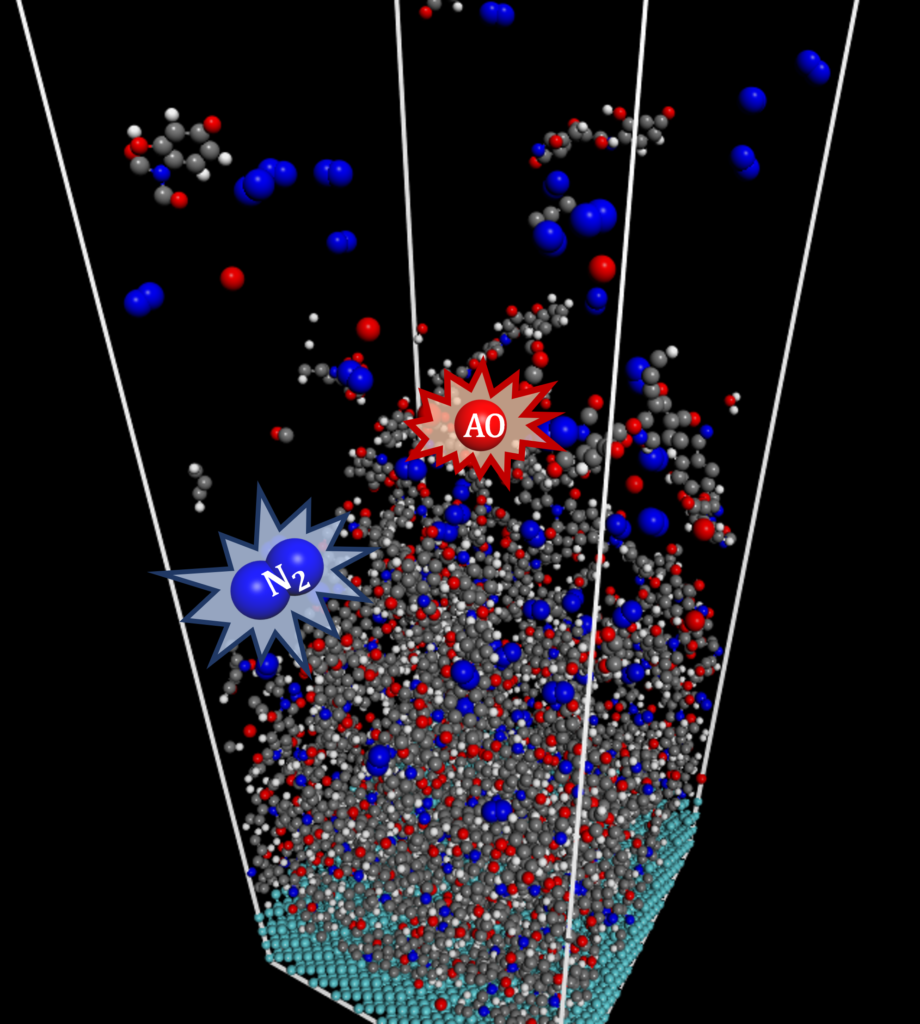Hyperthermal Erosion of Nanocomposites by N2 and AO: Reactive Molecular Dynamics Simulations
Development of lightweight and durable thermal protection structures (TPS) for the extreme aviation conditions of satellites and ballistic missiles is a cutting edge research field, requiring hyperthermal erosion test of the TPS. In particular, the ablation phenomenon of the TPS materials in the low-Earth orbit (LEO) environment is known to be mainly caused by atomic oxygen (AO). In the sub LEO environment, however, not only AO but also N2 accounts for a non-negligible portion of the atmospheric profile. A recent paper systematically compares the hyperthermal erosion of some Kapton polyimide (PI) based nanocomposites by AO and N2 using reactive molecular dynamics simulations with ReaxFF.
To study the surface erosion and heat transfer from the bombarded surface to the bottom of TPS, Kapton and its composites reinforced with polyhedral oligomeric silsesquioxanes (POSS), graphene, and carbon nanotubes (CNTs) were compared. The calculations were set up with a constrained and a thermostatted regions to study the detailed temperature profile of bombarded composites.
The ReaxFF simulation successfully described the surface chemistry of erosion such as formation of various small molecular reaction products and evolution of the internal temperature profile under the bombardment of AO and N2 at a speed of International Space Station’s mission flight. The collision of N2 which was not yet well studied, caused damage to the surface of tested nanocomposites comparable to AO. But N2’s reactive behavior was rarely observed in comparison with AO. The erosion yield, a measure of TPS’s durability under space aviation condition, by N2 and AO was at similar level. It was also found that the recession rate of Kapton PI determined from the reactive simulation could estimate the time taken for the ablation of a real Kapton specimen used in MISSE-6 in-flight flux test with accuracy.

Inseok Jeon, Soyoung Lee, Seunghwa Yang, Hyperthermal erosion of thermal protection nanocomposites under atomic oxygen and N2 bombardment. Int. J. Mech. Sci., 107910 (2022)
Key conceptspolymers Reactivity ReaxFF